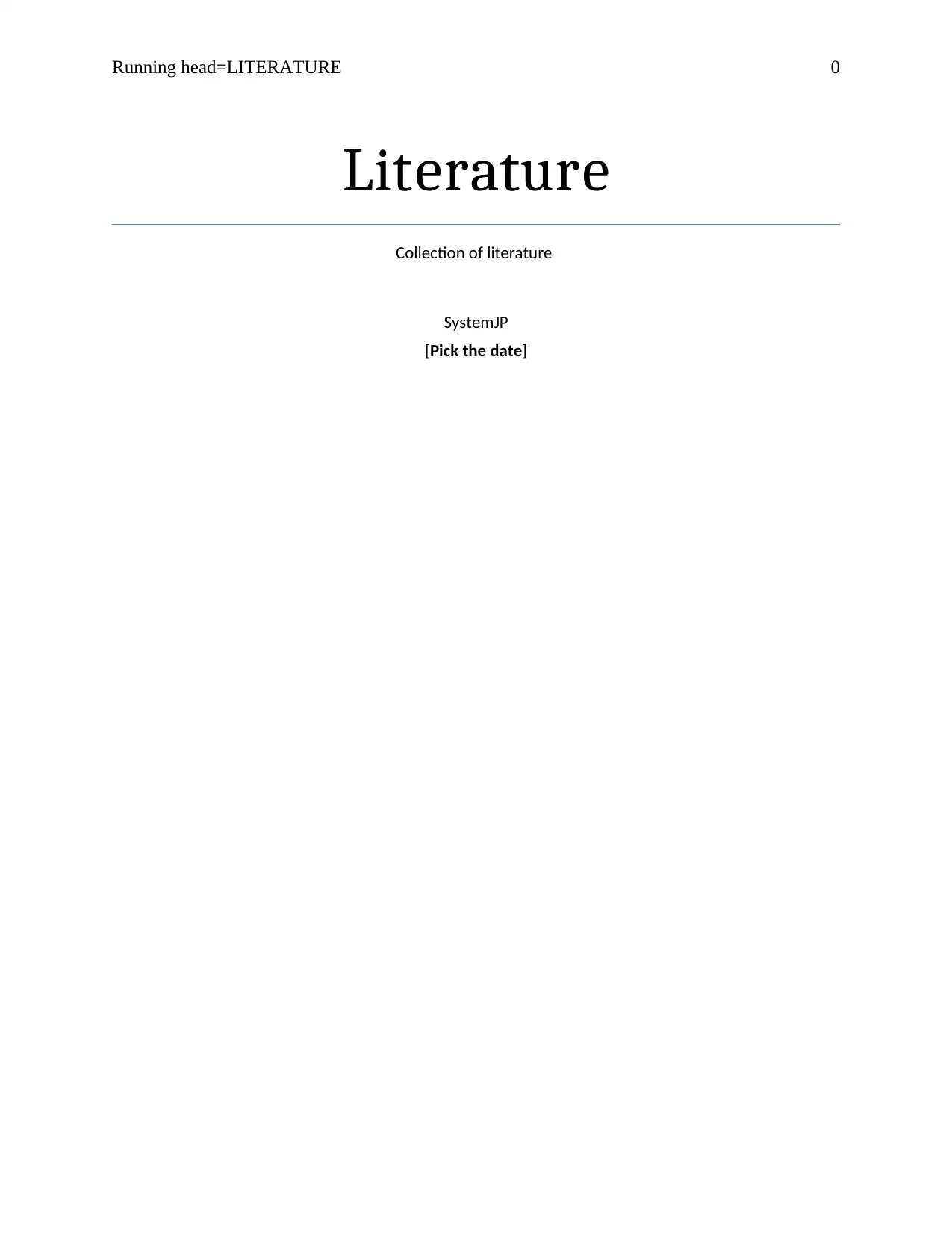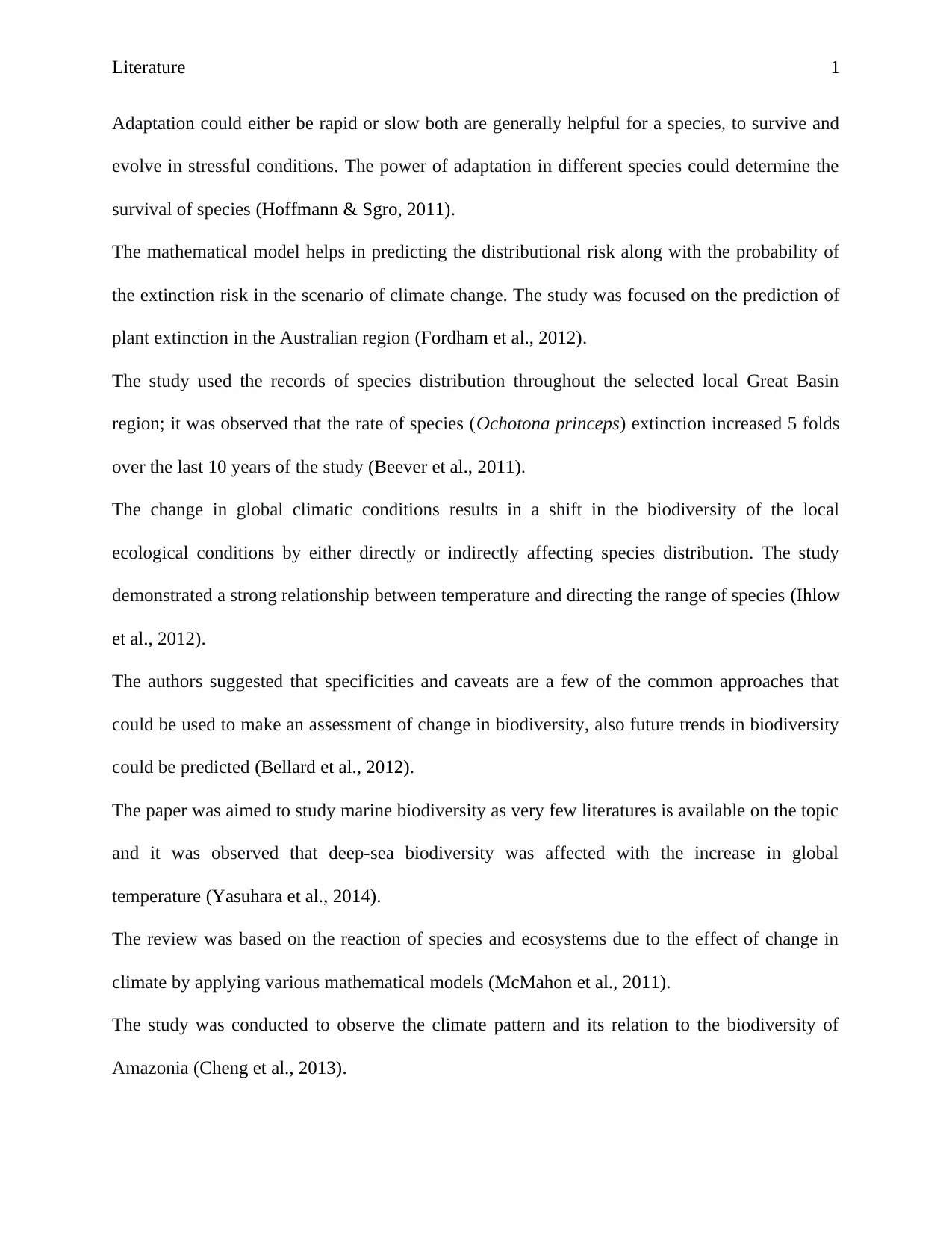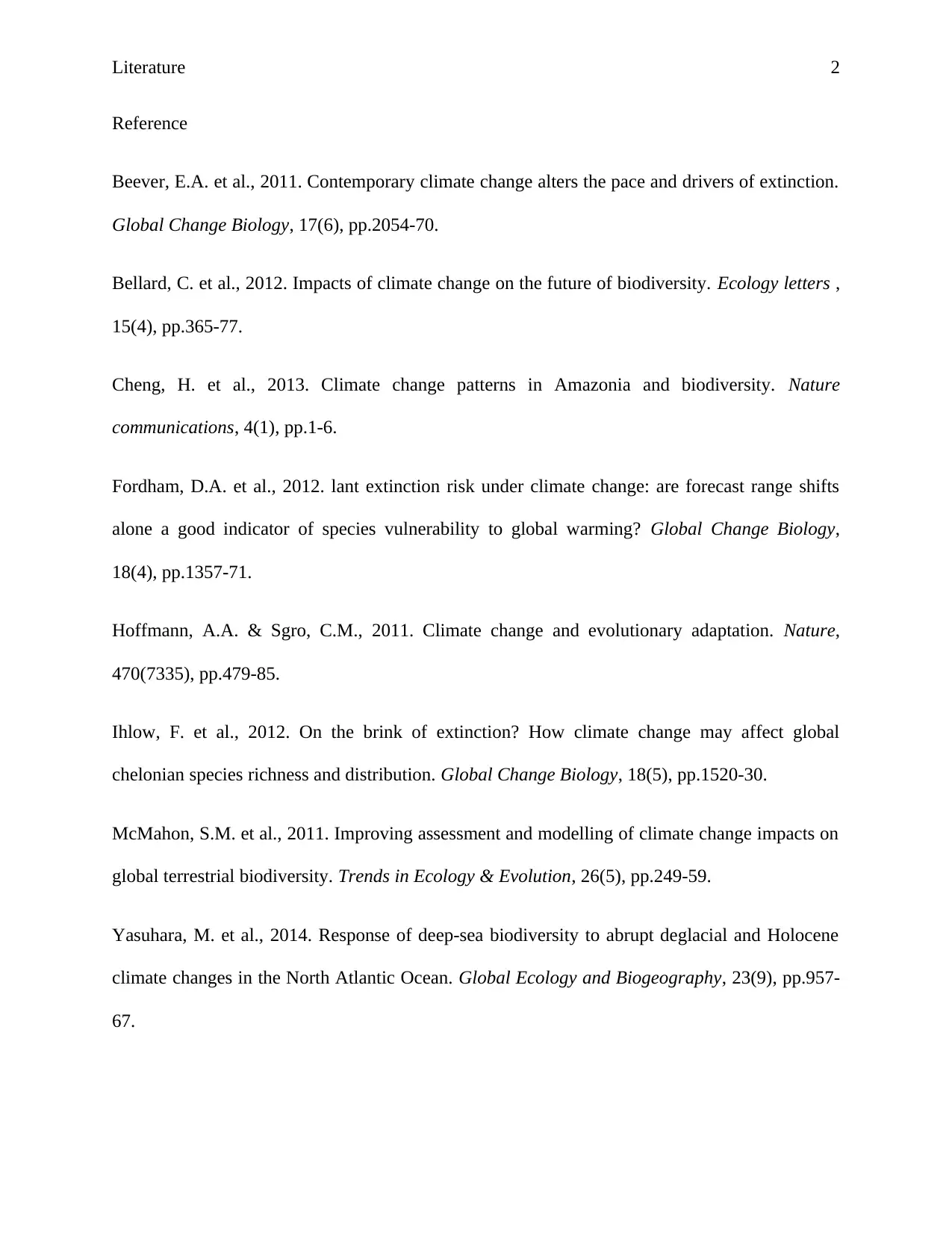Literature Review Assignment: Biodiversity and Climate Change Impact
VerifiedAdded on 2022/08/27
|3
|603
|23
Homework Assignment
AI Summary
This assignment is a literature review focusing on the impact of climate change on biodiversity. It examines several scientific papers that explore topics such as species adaptation, extinction risks, and the effects of changing climatic conditions on species distribution. The review highlights the use of mathematical models in predicting distributional risks and the influence of temperature on species ranges. Studies on plant extinction in the Australian region, the impact on the Great Basin region, and the effects on marine biodiversity are included. The assignment also references specific research papers and their findings, such as the increased extinction rate of Ochotona princeps, and the effects of climate change on biodiversity in Amazonia. The review emphasizes the importance of understanding these relationships to predict future trends and assess changes in biodiversity, with a focus on the use of databases and search engines to retrieve and analyze scientific literature. The assignment is designed to provide a practical exercise in retrieving and summarizing scientific information, with correct in-text citations and a reference list.
1 out of 3





![[object Object]](/_next/static/media/star-bottom.7253800d.svg)